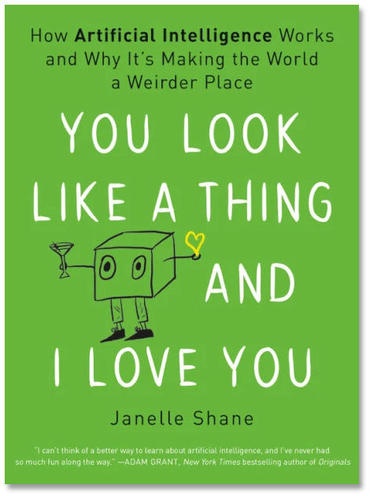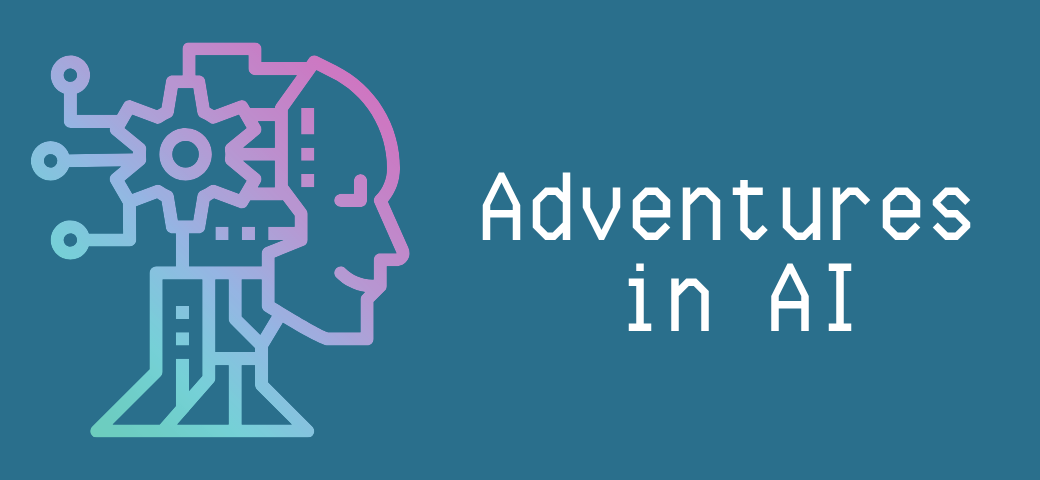I was lucky to work on a tech-related project a few months ago that leaned heavily into data science, with a client who preferred to educate me on the science rather than a scientist on the writing. I was also lucky to be accepted into the Creative Bridge program from Edinburgh’s Creative Informatics, a 10-week course that started last week, allowing me to learn more about start up best practices and explore a data-driven digital product of my own. (And which I may or may not write about at some point, depending on how far it works out, but let’s just say I’m not building the next Facebook.)
Through my client’s patient explanations as well as my own research – thank you LinkedIn Learning and authors Hannah Fry and Janelle Shane – I’ve learned a ton about data science in general and machine learning/artificial intelligence/neural networks in particular. By a ton, I mean a miniscule fraction of what there is to know, but enough as a layperson to write what I needed to write, and ponder how to use data in a communications project.
And to know that AI is about as intelligent as an earthworm and not about to go full HAL on us.

All of that has me thinking about the ways the Communications profession might use AI now, how the profession might change in the future, and what our role is in helping our industry, and the organizations and clients we work with, to avoid overhyping the new and shiny thing most of us don’t fully understand yet. To me, that last one is currently one of the biggest use cases in Communications.
Hearing some discussions about what AI might mean for us, I keep thinking about the prominent Comms guru who years ago became obsessed with Second Life as if it were the second coming. It really, really wasn’t. There’s keeping on top of trends and then there’s trying to make fetch happen.
AI is here to stay
AI is more obviously useful and with more obvious downsides. However, it’s not time to think about finding an AI solution to every problem, or worry about robots taking our jobs or refusing to open the airlock. While “fearing a rise of killer robots is like worrying about overpopulation on Mars,” it’s definitely time to learn more.
Because AI is already all around us. We’re using machine learning every day (hi spam filters, social media feeds and Google search results) but we don’t have to think about it. Like electricity, it powers things we use whether we know how they work or not.
It’s in our Alexas and Instagram filters, our text autocomplete and facial recognition, our map apps and Netflix or Amazon recommendations. Actually intelligent people are trying to overcome the challenges of using Artificial Intelligence in self-driving cars and improve our health and justice systems, without turning us into a dystopian society that has to dodge cars that don’t recognize us as walking skin sacs instead of paper sacks adrift in the wind.
AI is no miracle
Machine learning requires humans to select the right kind of problem and the right kinds of algorithms, and the solutions are only as good and unbiased as the data we train it with. About 80% of an AI project lies in cleaning up the data, and sometimes that’s all a project needs. Even with clean data, biases can remain because the world is biased. There are enormous ethical issues in police forces using facial recognition, or jail sentences determined solely by AI, and smaller ones when it comes to transparency around the use of AI-powered chatbots.
Algorithms will also find the easiest solution to a problem that ends up not solving the problem at all. Like finding sheep and giraffes in any photo of a grassy field, or building a robot that can “walk” from point A to point B by assembling the parts into a tower that falls over to reach its destination.
 Shane’s book title, You Look Like a Thing and I Love You, comes from her attempt to train a neural network to come up with pickup lines. That particular one might work on me (swoon), but otherwise the computer probably isn’t going to have a lot of success. There are a couple of AI-based programs that can write basic sports stories, reporting on the facts of games and scores, and others can be used as writing prompts to spur creativity, but AI is currently terrible at more insightful analysis or comprehensible long-form prose. The narrower the task the smarter it seems.
Shane’s book title, You Look Like a Thing and I Love You, comes from her attempt to train a neural network to come up with pickup lines. That particular one might work on me (swoon), but otherwise the computer probably isn’t going to have a lot of success. There are a couple of AI-based programs that can write basic sports stories, reporting on the facts of games and scores, and others can be used as writing prompts to spur creativity, but AI is currently terrible at more insightful analysis or comprehensible long-form prose. The narrower the task the smarter it seems.
Counteracting the hype
All of this has relevance to the Communications profession, but without better understanding what AI is and isn’t, and what use cases are currently possible, likely possible soon, and a long way off, it’s easy to get lost in the noise and sci-fi lore. Our jobs aren’t going to be taken over by AI just yet, and even if we had all the money to hire all the data scientists in the world, AI is not the solution to the vast majority of problems.
One fun way to learn more is to play around with it ourselves. Shane’s website, AI Weirdness, is a hilarious fly-on-the-wall version of that (Mango Cats ice cream, anyone?), but there are hands-on versions that require no coding or knowledge of how it all works. For example, Talk to Transformer offers simple to use text completion, where the AI selects the rest of a story from your beginning. I’ve downloaded and am starting to play with RunwayML so hopefully I’ll have some fun and/or useful examples of my own at some point.
This is what I got by typing the bold text into Talk to Transformer’s prompt:

So I’m going to rest easy tonight, and try to learn a little more tomorrow.


